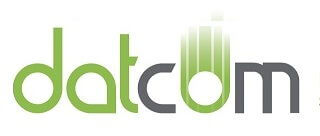In 1984, Steve Jobs wowed audiences by unveiling the Apple Macintosh computer, a marvelous device that promised freedom from IBM’s stodgy definition of what computers should be. The Mac was designed for consumers and marketed toward small to medium businesses. It was also made for the “knowledge workers” of tomorrow. Professionals with college degrees who would use the power of their minds and the power of small computers to get more done.
The Macintosh was the first successful mouse-driven computer with a graphical user interface. It had a crisp screen and came with applications for producing graphics and WYSIWYG (What-you-see-is-what-you-get) word processing. It allowed people without advanced computer knowledge to access the power of computing. Apple promised to break through the barriers of corporate computing to give everyone a chance to fulfill their dreams. It promised to unleash human potential. It promised freedom.
A generation later, office workers are anything but free. They spend hours staring at screens, driving pointers and cursors from app to app. The personal computer was meant to be another desk appliance alongside the telephone. But it’s not a tool anymore. It is a place to be.
When we take breaks, we tab over to social media, or read articles online. We shop, study, socialize, order food, flirt, attend religious services, amuse ourselves, and satisfy our morbid curiosity without peeling our eyes away from our screens. Every moment of this way of life is observable and trackable and for sale. These devices take more than they give and commoditize the end user.
Long gone are the days when staff would use a few standard productivity applications. Now, there are thousands of computer and phone apps that demand our attention. They create problems for other apps and plugins to solve. They demand integrations, permissions, and connections to make work faster. They leave critical legacy software and tested workflows in the dust. They create security breaches. For every problem they promise to solve, they create an inefficiency footprint a mile wide. And enough is enough.
C-suite executives are insulated from experiencing this problem firsthand. But the average office worker is going in a thousand different directions all day long. 14 browser tabs. Several messaging applications. Notifications galore. Even if you monitor and prevent time-wasting activity, the relationship between human workers and computers is not as profitable as it could be.
And that is the goal of “digital transformation.” To automate the flim-flam tasks that waste time and do not produce a great ROI. Some technology experts call it “Robotic Process Automation (RPA). At DatCom, we call it “Data Processing Automation” (DPA) because we have a human-centric approach. Our goal is to save time so that human workers can engage in far more interesting and fulfilling work. Just how much time is saved depends on the department or task.
In general, DPA can eliminate 27% of office labor. But if we use it for accounting and other financial processes, we reach 80%. This leaves accounting personnel to do more data analysis, decision making, and client counseling.
Eliminating a third of office labor is going to result in a higher percentage of ROI per employee, making it feasible to invest more in those employees so that they can experience career growth and personal transformation.
Business leaders and managers: Connect the dots! The promise of the personal computer at work can still become a reality if you invest in the exciting new tools that are now available to make work and life better.
For more information on how DatCom can help your company reach it’s fullest potential, contact me today.


